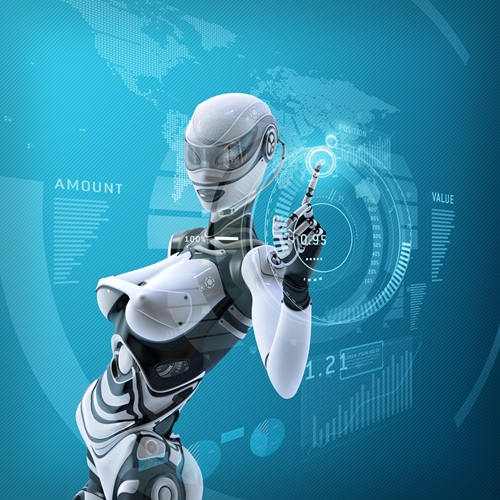While cloud infrastructure has majorly impacted the enterprise and improved the way that regular business processes are done, the technology's power seems to extend far beyond boosting the corporate buck. Today the cloud is being used in the fight to cure cancer as well as to further innovation in robotics.
In a recent IBM sponsored article for The Washington Post, contributor Nathan Day explored just how cloud computing services are driving innovation in robotics, pointing to the Open Source Robotics Foundation and its recent project as an example. Day stressed that it is not a lack of ideas that limits innovation, but rather, limited resources.
"Access to resources is a major barrier preventing many innovators from bringing their ideas to life," Day wrote. "Cloud computing is reducing one of those barriers – providing on-demand, scalable computing resources in a pay-as-you-go model that otherwise would require millions of upfront out of pocket capital and hardware costs. Through the limitless computing resources of the cloud, many innovators are able to fully realize their ideas for improving the world. This also translates across business and society – cloud computing is driving innovation and expediting research around the world."
OSRF drives cloud-enabled robotics research
As Day outlined, the OSRF's Defense Advanced Research Projects Agency (DARPA) is sponsoring its DARPA Robotics Challenge in an effort to unearth innovative ways to use robotics for responding to disaster scenarios. This year, DARPA incorporated cloud storage into the equation with a simulation stage based in the cloud. According to the source, the Virtual Robotics Challenge was run on cloud hardware so that roughly 100 competitors from around the world could participate. The winners of the cloud stage then went on to compete at a live event with the physical robots in attendance.
While the contest was specifically geared at humanitarian efforts and disaster relief, Day outlined some impressive feats in robotics that demonstrate how cloud storage solutions are not just to keep Word documents safe. He detailed the Cheetah robot, which can reach galloping speeds of 18 mph, currently holding the record for legged robots land speed. Day also introduced ATLAS, a particularly advanced humanoid robot.
"If the cloud can enable innovators to design virtual robots to save lives – just imagine what's possible in other areas of government and business," Day wrote. "By reducing the barrier to entry and providing advanced, scalable computing power on-demand over the Internet, cloud computing is helping bring ideas to life and driving innovation across society."
Data Center Knowledge contributor Jason Verge also reported on the OSRF and its DARPA Virtual Robotics Challenge, noting that the competition is a testament to the power of cloud computing storage. Furthermore, he stressed that the cloud-based portion of the challenge is a great way to test the limits of the technology's performance and demonstrates how virtualized environments and hardware need to work together to reach entirely new levels of innovation.
Verge detailed that the OSRF initially tried to use Amazon Web Services for the competition, but could not get cloud servers communicating efficiently and quickly enough. So the OSRF turned to SoftLayer for its "bare metal cloud and high-performance GPU servers." This platform was the only one that was able to effectively shorten the communication loop between servers to 1k/second, the source explained, and thus, it was the best choice to gaining the power and speed that OSRF needed for robotics simulation in the cloud.
In a recent Engineering and Technology Magazine article, contributor Abi Grogan detailed the evolution of humanoid robotics, sharing insight from robotocist Hiroshi Ishiguro, the creator of the humanoid robot Geminoid-F. The source explained that Ishiguro views cloud computing as the answer to the limitations of human-to-robot interaction, as wireless network connections could link the electronic memory of a robot with online databases like Google and Wikipedia.
"Now we have a powerful cloud-computing system which allows intelligent engagement," Ishiguro explained. "If people can react to realistic scenes with a robot system then we can gather meaningful data; it will allow us to make conversation between a human being and an intelligent agent autonomous."







